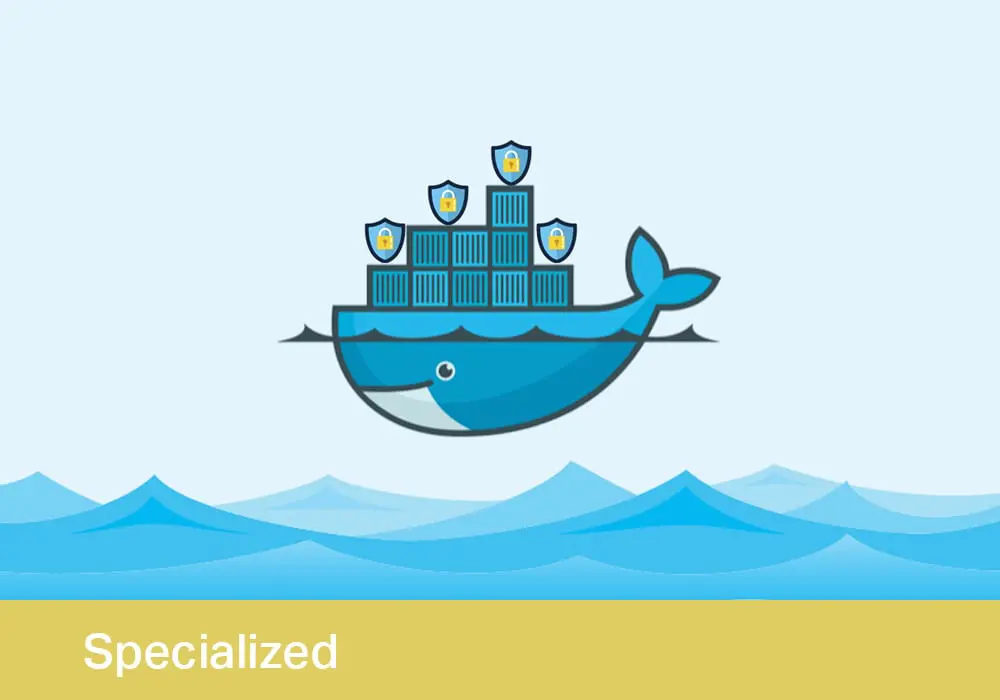Cursul DevOps Artisan – Docker Security oferă o privire de ansamblu asupra părții practice și teoretice a caracteristicilor de securitate și a bunelor practici pentru a proteja serviciile de containerizare și host.
Acest curs se adresează tuturor celor care lucrează în calitate de:
- Developeri
- Operations
- DevOps
- Architects
Cursul DevOps Artisan – Docker Security oferă o imagine de ansamblu și teorie a caracteristicilor importante de securitate și a celor mai bune practici pentru protejarea serviciilor și gazdelor containerizate. Cursanții vor învăța cum să utilizeze eficient Docker pentru a construi imagini de container sigure și performante.
Toate aceste caracteristici vor fi explicate și demonstrate cu exemple detaliate în laboratorul practic.
După finalizarea acestui curs, participanții vor avea o înțelegere fermă a multor tehnici pentru evaluarea eficientă a securității imaginilor de pe container și a modului de apărare a acestora.
Viitorii cursanți trebuie să:
- aibă abilități care includ commands Unix, navigarea prin file system, crearea și editarea fișierelor text
- cunoștințe despre Docker (se recomandă parcurgerea cursurilor Docker Fundamentals și Docker Advanced)
*cursul prezent este o opțiune standard de prezentare, însă este un curs ușor customizabil, iar agenda poate suferi modificări în funcție de nevoia de instruire a Beneficiarului
Module 1: Docker Recap
- Age of Virtualization
- Why Containers?
- Docker History
- Containerization
- OS Components (Namespaces, Control Groups)
- Docker Engine
- Containers and VMs
- Docker Versions
- Docker Update Channels
- Installing Docker on Linux with steps
- Docker Images
- Image Contents
- Image Layers
- Multiple architectures support
- Image registry
- Image security
- Repositories
- Docker Commands
- Running and stopping containers
- Network types
- Working with networks
- Testing the network
- Persistent Storage in Docker
- Creating and mounting a volume
- Listing, inspecting and deleting volumes
- Logging Docker
- Explaining different log types
Module 2: Secure Docker Connectivity
- Docker hub image vulnerabilities
- Possible attack vectors
- How does Docker handle security?
- Different layers of security
- Secure Docker connectivity overview
- TLS explained
- What is a Certificate Authority?
- Configuring secure Docker connectivity with steps
Hands-on Lab: Secure Docker Connectivity
Module 3: Secure Docker Registry
- What is Docker Registry?
- Securing a Docker registry
- Authorization Options
- Basic authentication configuration
- Token-based authentication configuration
Hands-on Lab: Deploying a Secure Docker Registry
Module 4: Role-Based Access Control
- Using authorization and roles
- Docker’s Plugin API for RBA
- Enabling the authorization plugin
- Open Policy Agent (OPA) Configuration
Hands-on Lab: Implementing RBAC using AuthN and AuthZ in Docker
Module 5: Docker Swarm
- What is Docker Swarm?
- Docker Swarm components explained
- Docker CLI Cluster commands
- Docker Swarm Security
- Bootstrapping a Warm Cluster
- Secrets in a Swarm Cluster with Secret rotation
- Autolock in Warm Clusters
- Backing up and recovering a Swarm Cluster
Hands-on Lab: Docker Swarm Installation and Secure Docker Swarm cluster
Module 6: Networking
- Network types
- Working with networks
- Testing the network
Hands-on Lab: Docker Networking
Module 7: Managing Secrets
- What are secrets
- How to manage Docker Secrets
Hands-on Lab: Managing Secrets
Module 8: Content Trust
- Docker Content Trust
- Image Tags signed or not signed
- Docker Content Trust Key
- Signing Images with DCT
- What is Notary
Hands-on Lab: Docker Content Trust
Module 9: Linux capabilities
- What are Linux Capabilities?
- Dropping capabilities
- Using pscap tool
- Whitelisting
- Listing capabilities
Hands-on Lab: Linux Kernel Capabilities
Module 10: Controlling Access to Resources with Control Groups
- Control Group
- Control Group Subsystems, hierarchy
- Managing cgroup for Containers
- Cgroup Parent Context
- Docker Cgroup Resource Limits
Hands-on Lab: Docker and Cgroups
Module 11: AppArmor
- Linux Security Models
- AppArmor explained
- Developing an AppArmor Profile
- Docker and AppArmor Profiles
- Debugging AppArmor
Hands-on Lab: AppArmor and Docker
Module 12: Seccomp
- How does Docker use Seccomp?
- Creating a custom Seccomp profile
- Using custom profiles for all containers
- Using the Whitelist
Hands-on Lab: Seccomp
Module 13: SELinux
- SELinux explained
- SELinux Policy, labeling and type enforcement
- Enable SELinux in Docker
- Changing SELinux behavior per Container
Hands-on Lab: SELinux
Module 14: DDos
- Security approach of DoS Attacks
Hands-on Lab: Docker DDoS attacks performance
Module 15: Tools for security
- Docker bench
- What is Docker Bench
- Docker Bench Options
- InSpec
- What is InSpec
- InSpec Install
- Running Chef InSpec
- InSpec Profile Structure
- InSpec Community Profiles
- Anchore
- How does Anchore work
- Ancore Engine
- Installing Anchore Engine
- Using Anchore
- Jenkins pipelines
- Continuous integration flow
- Continuous delivery flow
- Continuous deployment flow
- What is Jenkins?
- What is a pipeline?
- Securing Jenkins CI/CD Pipeline with Anchore
- Dagda
- What is Dagda?
- Installing and running Dagda
- Dagda database
- Analyzing docker images/containers
- Monitoring running containers
- Getting Docker daemon events
- Sysdig Falco
- What is Sisdig?
- What is Falco?
- Falco rules
- Installing Falco
- Running Falco as a daemon
- Hands-on Lab: Docker Bench
- Hands-on Lab: InSpec
- Hands-on Lab: Anchore
- Hands-on Lab: Create a Jenkins pipeline for docker image security scanning with anchore
- Hands-on Lab: Dagda
- Hands-on Lab: Sysdig Falco
Module 16: Best Practices
- Secure the build pipeline
- Secure the Network
- Secure the Host
- Secure the Container Runtime
- Secure the Orchestrator Config
- Secure the Data
Nu sunt recomandări în acest moment.
Acest curs îi pregătește pe participanți pentru susținerea examenului de certificare în vederea obținerii rolului de Professional SecOps Engineer.


